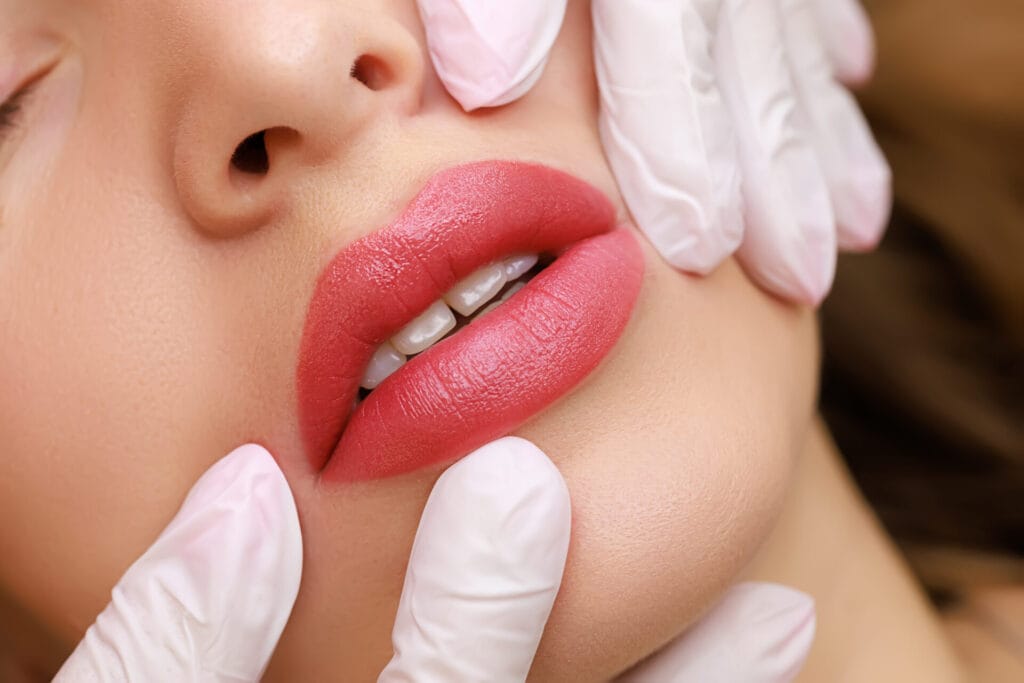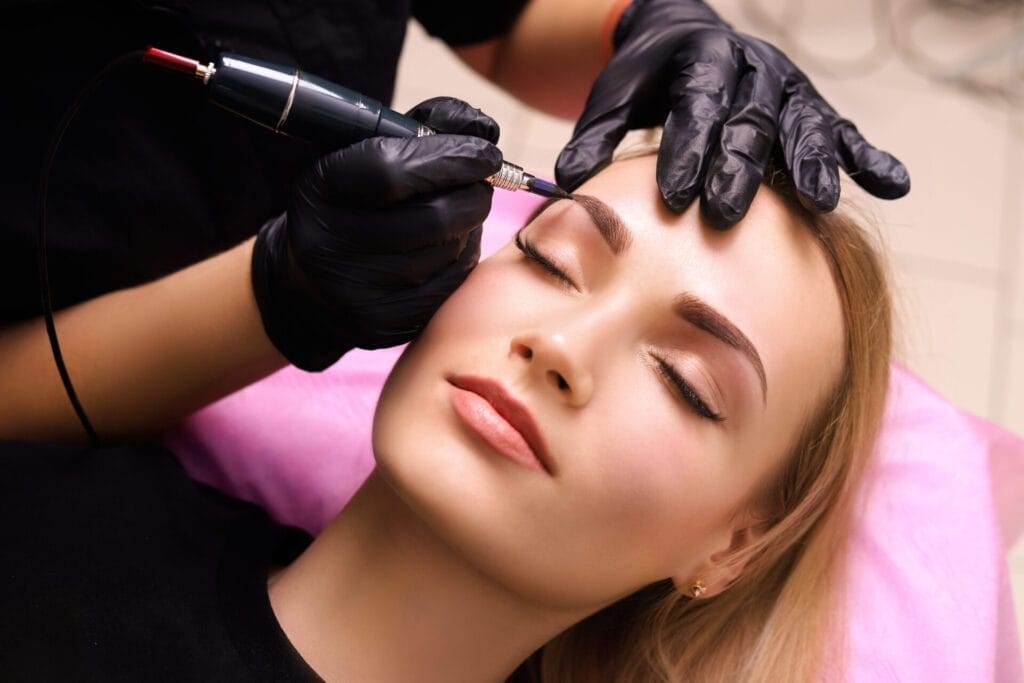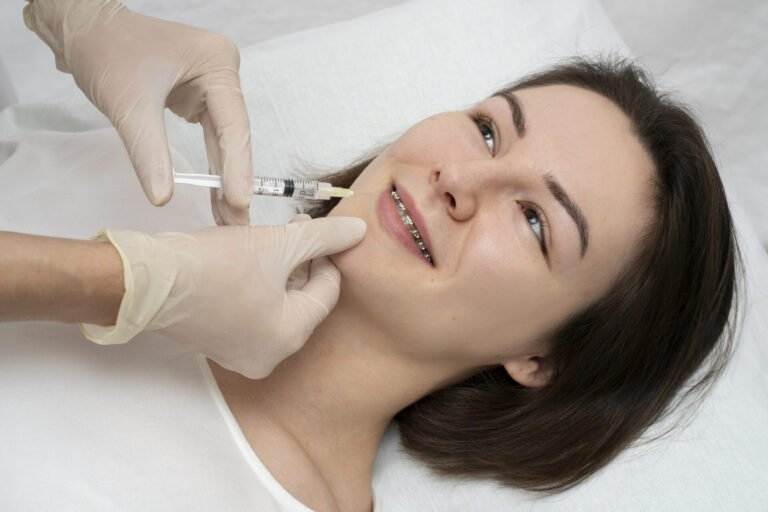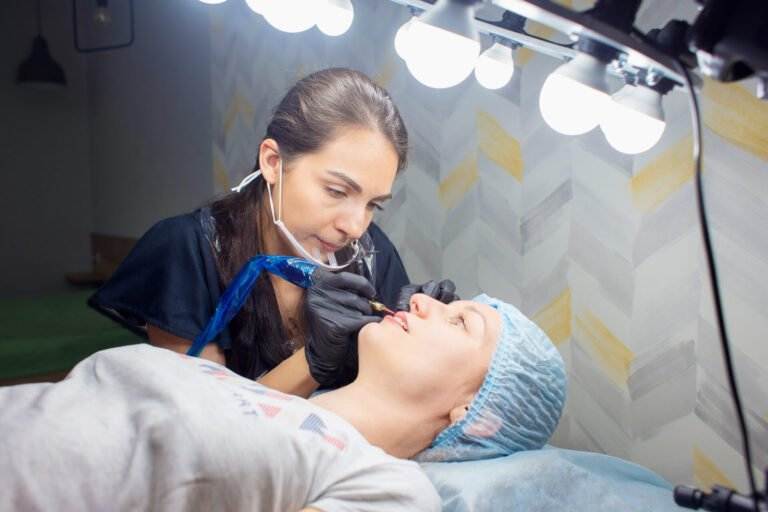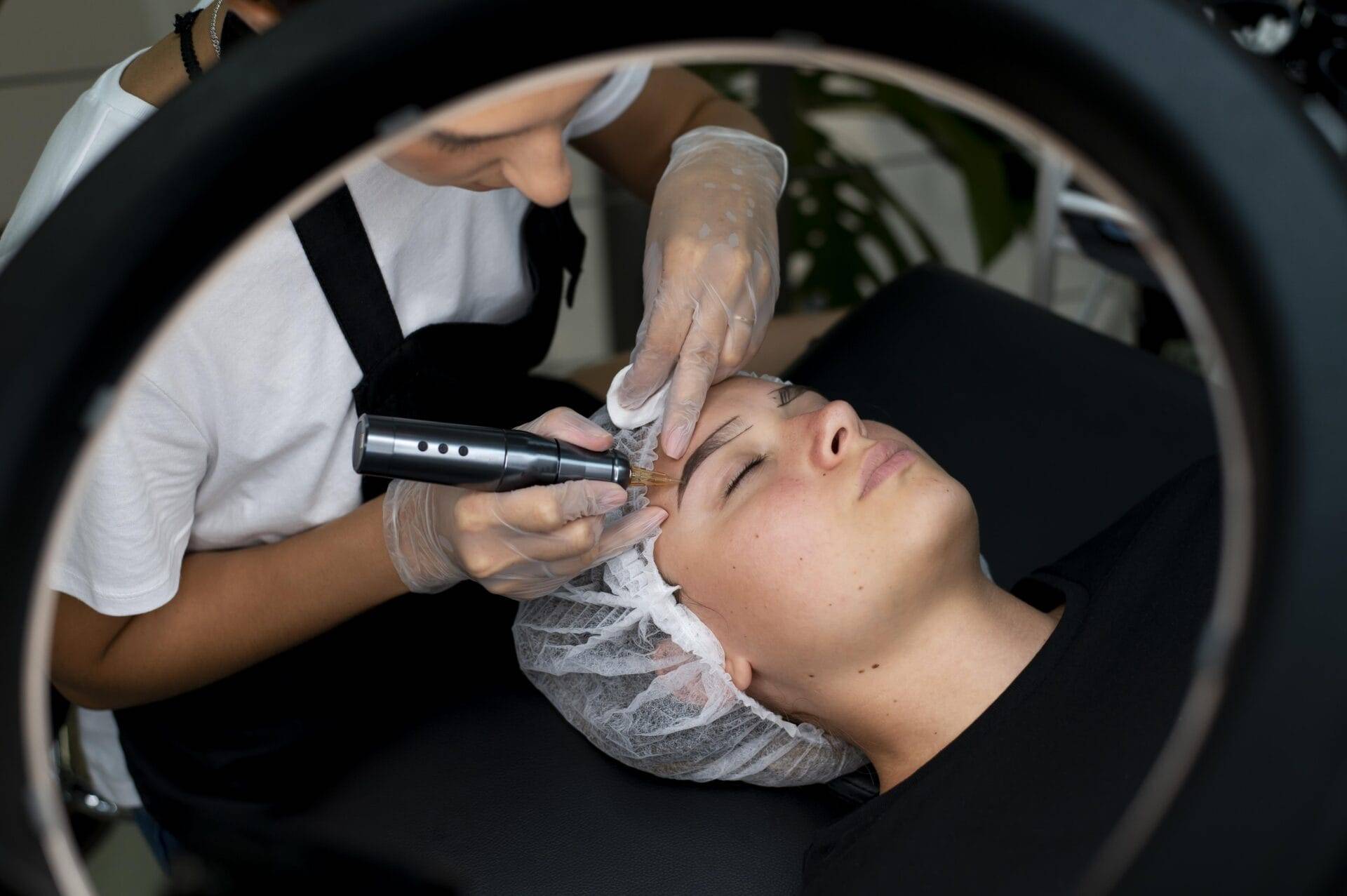The beauty industry is constantly evolving, with new trends and techniques emerging all the time. One trend that has been steadily gaining popularity in recent years is permanent makeup. Also known as micropigmentation or cosmetic tattooing, permanent makeup involves the application of pigments to the skin to enhance features such as eyebrows, eyeliner, and lips. This article will explore the rise of permanent makeup in the beauty industry, its benefits, different types, and what to expect during a session.
The Rise of Permanent Makeup: A Growing Trend in the Beauty Industry
Permanent makeup has become increasingly popular in recent years, with more and more people opting for this long-lasting solution to enhance their natural features. According to a report by Grand View Research, the global permanent makeup market is expected to reach $1.9 billion by 2025, growing at a compound annual growth rate of 5.7%. This growth can be attributed to several factors, including advancements in technology and techniques, increased awareness and acceptance of permanent makeup, and the desire for convenience and time-saving solutions.
Understanding Permanent Makeup: What is it and How Does it Work?
Permanent makeup, also known as cosmetic tattooing or micropigmentation, involves the application of pigments to the skin using a tattooing technique. The pigments are implanted into the upper layers of the skin, creating long-lasting color and definition. The process typically involves multiple sessions, with each session building upon the previous one to achieve the desired result.
During a permanent makeup session, a skilled technician will use a handheld device or machine to deposit the pigments into the skin. The technician will carefully choose the color and shape that best suits the client’s natural features and desired outcome. The process can take anywhere from one to three hours, depending on the area being treated and the complexity of the design.
The Benefits of Permanent Makeup: Convenience, Time-Saving, and More
One of the main advantages of permanent makeup is the convenience it offers. With permanent makeup, you can wake up every morning with perfectly shaped eyebrows, defined eyeliner, and luscious lips, without having to spend time applying makeup. This can be especially beneficial for those with busy lifestyles or those who struggle with applying makeup due to physical limitations.
Permanent makeup also offers a time-saving solution. By eliminating the need to apply makeup every day, you can save valuable time in your daily routine. This can be particularly beneficial for those who are always on the go or have demanding schedules.
In addition to convenience and time-saving, permanent makeup can also be cost-effective in the long run. While the initial investment may be higher compared to traditional makeup products, the long-lasting results mean that you won’t have to constantly repurchase and replace your makeup. This can result in significant savings over time.
Furthermore, permanent makeup can benefit people with certain conditions or lifestyles. For example, individuals with alopecia or thinning eyebrows can benefit from permanent eyebrow makeup, as it can create the appearance of fuller brows. Similarly, people with vision impairments or unsteady hands may find it difficult to apply eyeliner or lip color, making permanent makeup a practical solution.
The Artistry of Permanent Makeup: How Skilled Technicians Create Natural-Looking Results
One of the key factors in achieving natural-looking results with permanent makeup is the skill and expertise of the technician performing the procedure. A skilled technician will have an eye for detail and a deep understanding of facial anatomy, allowing them to create results that enhance the client’s natural features.
To become a permanent makeup technician, extensive training and qualifications are required. Technicians must undergo specialized training programs that cover topics such as color theory, skin anatomy, sanitation and sterilization procedures, and proper technique. They must also pass certification exams to demonstrate their knowledge and skills.
When choosing a permanent makeup technician, it is important to consider their qualifications, experience, and reviews from previous clients. Look for technicians who have received proper training from reputable institutions and have a portfolio of their work to showcase their skills. Reading reviews and testimonials can also give you an idea of the technician’s professionalism and the quality of their work.
The Different Types of Permanent Makeup: Eyebrows, Eyeliner, Lips, and More

Permanent makeup can be applied to various areas of the face, including eyebrows, eyeliner, lips, and even beauty marks. Each type of permanent makeup serves a different purpose and requires specific techniques.
Permanent eyebrow makeup is one of the most popular types of permanent makeup. It involves enhancing the shape, color, and density of the eyebrows to create a more defined and symmetrical appearance. This can be achieved through techniques such as microblading, which involves creating hair-like strokes using a handheld tool, or powder brows, which involves shading the eyebrows for a soft and natural look.
Permanent eyeliner is another popular option, as it can enhance the eyes and create the appearance of thicker lashes. The eyeliner can be applied to the upper or lower lash line or both, depending on the desired look. Techniques such as tightlining or winged liner can be used to create different effects.
Permanent lip makeup can help enhance the shape and color of the lips. It can be used to create fuller-looking lips, correct asymmetry, or add definition. Techniques such as lip blush or full lip color can be used to achieve different results.
The Procedure: What to Expect During a Permanent Makeup Session
During a permanent makeup session, there are several steps involved to achieve the desired results. Here is a step-by-step explanation of what typically happens during a permanent makeup session:
1. Consultation: The session will begin with a consultation, where you will discuss your goals, preferences, and any concerns or questions you may have. The technician will assess your natural features and recommend the best approach for your desired outcome.
2. Design and color selection: The technician will then design the shape and color that best suits your features and preferences. They may use stencils or freehand drawing to create the design. You will have the opportunity to provide feedback and make any adjustments before proceeding.
3. Numbing: Before the procedure begins, a topical numbing cream or gel will be applied to the area being treated to minimize discomfort. The numbing cream typically takes around 20-30 minutes to take effect.
4. Pigment application: Once the area is numb, the technician will begin applying the pigments using a handheld device or machine. They will carefully deposit the pigments into the skin, following the design and color discussed during the consultation. The process may involve multiple passes to achieve the desired saturation and depth of color.
5. Aftercare instructions: After the procedure is complete, the technician will provide you with aftercare instructions to ensure proper healing and longevity of the results. This may include avoiding certain activities or products, keeping the area clean and moisturized, and scheduling any necessary touch-up appointments.
Aftercare for Permanent Makeup: Tips for Keeping Your Results Looking Fresh
Proper aftercare is essential to ensure the best possible results and longevity of your permanent makeup. Here are some tips for aftercare:
1. Keep the area clean: Gently clean the treated area with a mild cleanser and water twice a day. Avoid using harsh or abrasive products that can irritate the skin.
2. Avoid excessive moisture: Avoid swimming, saunas, hot tubs, or any activities that may cause excessive sweating or moisture on the treated area for at least two weeks.
3. Avoid direct sunlight: Protect the treated area from direct sunlight for at least two weeks. Apply sunscreen with a high SPF to prevent fading or discoloration.
4. Avoid picking or scratching: It is important to resist the urge to pick or scratch at the treated area, as this can disrupt the healing process and affect the final results.
5. Moisturize regularly: Apply a thin layer of ointment or moisturizer recommended by your technician to keep the area hydrated and promote healing.
By following these aftercare tips, you can ensure that your permanent makeup heals properly and maintains its fresh appearance for as long as possible.
Touch-Ups and Maintenance: How Often Should You Get Them?
While permanent makeup is designed to be long-lasting, touch-ups and maintenance are typically required to maintain the desired results. The frequency of touch-ups will depend on several factors, including individual skin type, lifestyle, and the specific type of permanent makeup.
In general, touch-ups are recommended every 1-3 years to refresh the color and maintain the shape. Eyebrow touch-ups may be required more frequently, as the color can fade faster due to exposure to sunlight and other environmental factors. Lips and eyeliner may require less frequent touch-ups, as the pigments tend to last longer in these areas.
It is important to note that the longevity of permanent makeup can be affected by factors such as sun exposure, skincare products, and individual skin type. Regularly using sunscreen, avoiding harsh skincare products on the treated area, and following proper aftercare instructions can help prolong the life of your permanent makeup.
Permanent Makeup Myths: Debunking Common Misconceptions
There are several myths and misconceptions surrounding permanent makeup that can deter people from considering it as an option. Let’s debunk some of these common myths:
1. Permanent makeup looks unnatural: When done by a skilled technician, permanent makeup can look incredibly natural. The key is to choose a technician who has an eye for detail and understands how to enhance your natural features.
2. Permanent makeup is painful: While some discomfort may be experienced during the procedure, most technicians use numbing creams or gels to minimize pain. The level of discomfort varies from person to person, but it is generally tolerable.
3. Permanent makeup is truly permanent: While the term “permanent” is used to describe the procedure, the pigments do fade over time. Touch-ups are typically required every 1-3 years to maintain the desired results.
4. Permanent makeup is only for women: Permanent makeup is not limited to women. Men can also benefit from permanent makeup, whether it’s for enhancing eyebrows, creating a more defined beard or mustache, or correcting scars or discoloration.
5. Permanent makeup is expensive: While the initial investment may be higher compared to traditional makeup products, the long-lasting results can be cost-effective in the long run. Consider the amount of money spent on purchasing and replacing makeup products over time.
By debunking these myths, it becomes clear that permanent makeup is a viable option for those looking for long-lasting and natural-looking results.
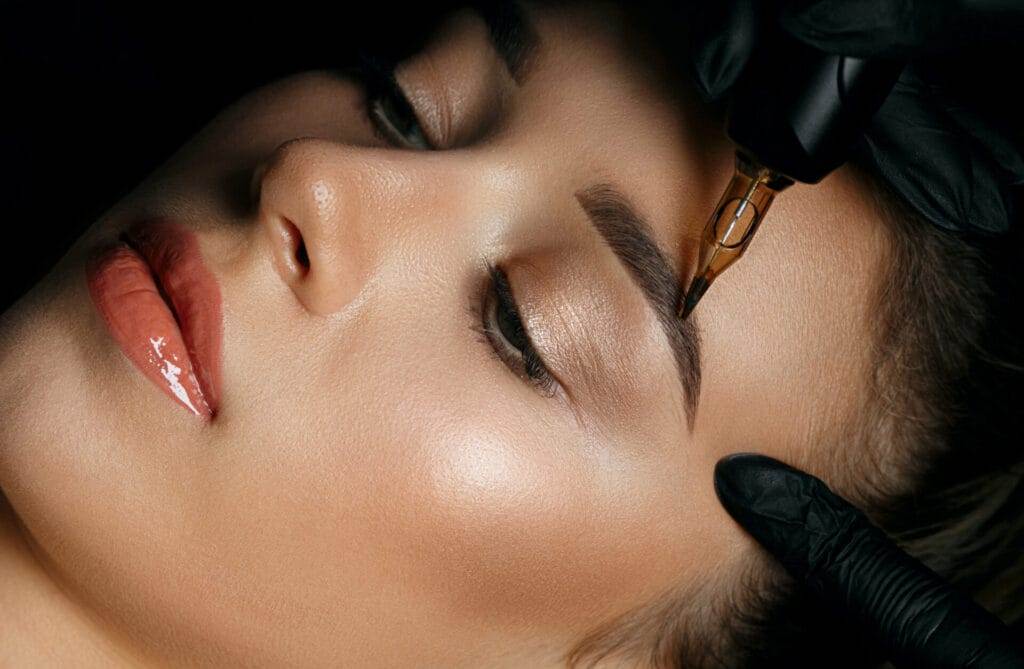
The Future of Permanent Makeup: Advancements in Technology and Techniques
The future of permanent makeup looks promising, with advancements in technology and techniques constantly being developed. These advancements aim to improve the precision, safety, and longevity of permanent makeup.
One area of advancement is in the pigments used for permanent makeup. New pigments are being developed that are more stable and fade-resistant, resulting in longer-lasting results. These pigments also offer a wider range of colors, allowing technicians to create more customized and natural-looking results.
Technological advancements have also led to the development of new devices and machines used in permanent makeup procedures. These devices offer greater precision and control, allowing technicians to create more intricate designs and achieve better results. Additionally, advancements in numbing creams and gels have made the procedure more comfortable for clients.
Furthermore, there is ongoing research into new techniques and applications for permanent makeup. For example, scalp micropigmentation is a technique that involves tattooing tiny dots on the scalp to create the appearance of a full head of hair. This technique can be used to treat hair loss or thinning hair and is gaining popularity as a non-surgical alternative to hair transplantation.
As technology continues to advance and new techniques are developed, the future of permanent makeup looks promising. These advancements will further enhance the safety, precision, and longevity of permanent makeup procedures, making them an even more attractive option for those looking to enhance their natural features.
Permanent makeup has become a growing trend in the beauty industry, offering convenience, time-saving, and cost-effective solutions for enhancing natural features. Skilled technicians play a crucial role in creating natural-looking results, and it is important to choose a technician with the right qualifications and experience. The different types of permanent makeup, such as eyebrows, eyeliner, and lips, offer various options for enhancing different areas of the face.
Proper aftercare is essential to ensure the best possible results and longevity of permanent makeup. Regular touch-ups and maintenance are typically required to maintain the desired results. It is important to debunk common myths and misconceptions surrounding permanent makeup, as it can be a viable option for those looking for long-lasting and natural-looking results.
The future of permanent makeup looks promising, with advancements in technology and techniques constantly being developed. These advancements will further enhance the safety, precision, and longevity of permanent makeup procedures, making them an even more attractive option for those looking to enhance their natural features.

